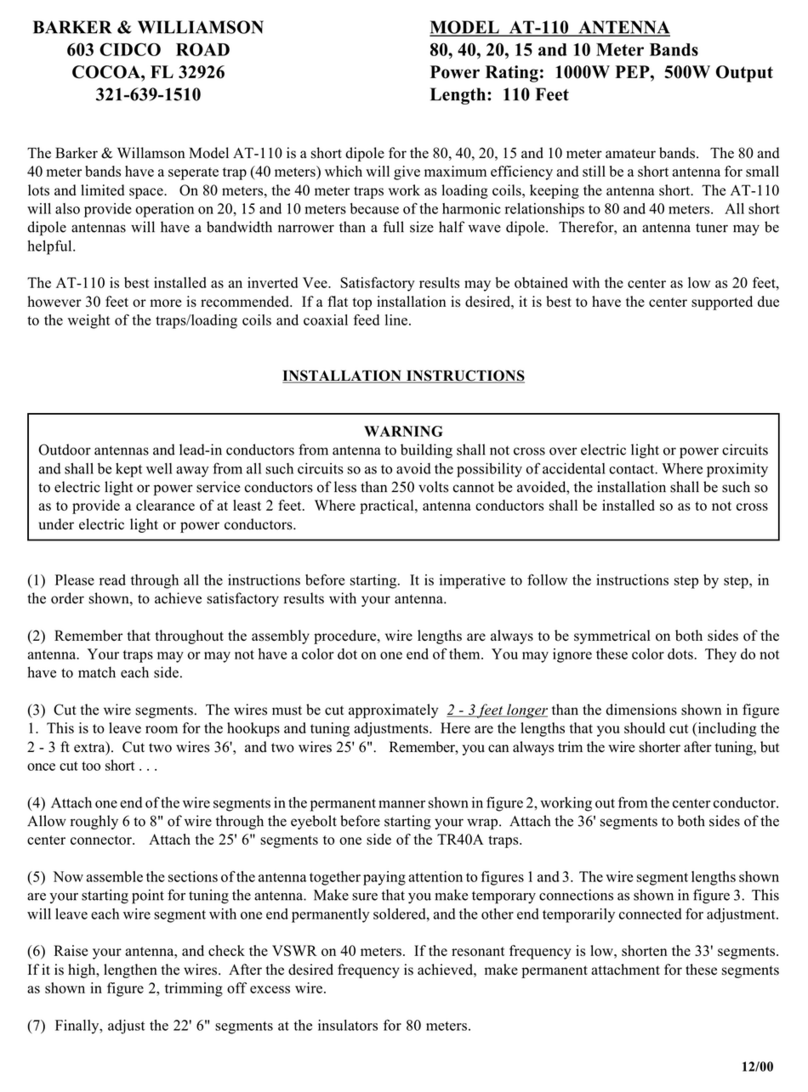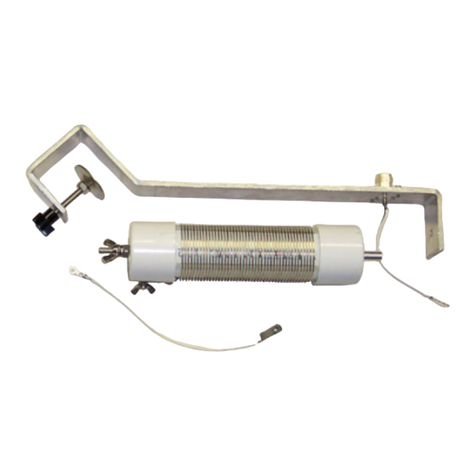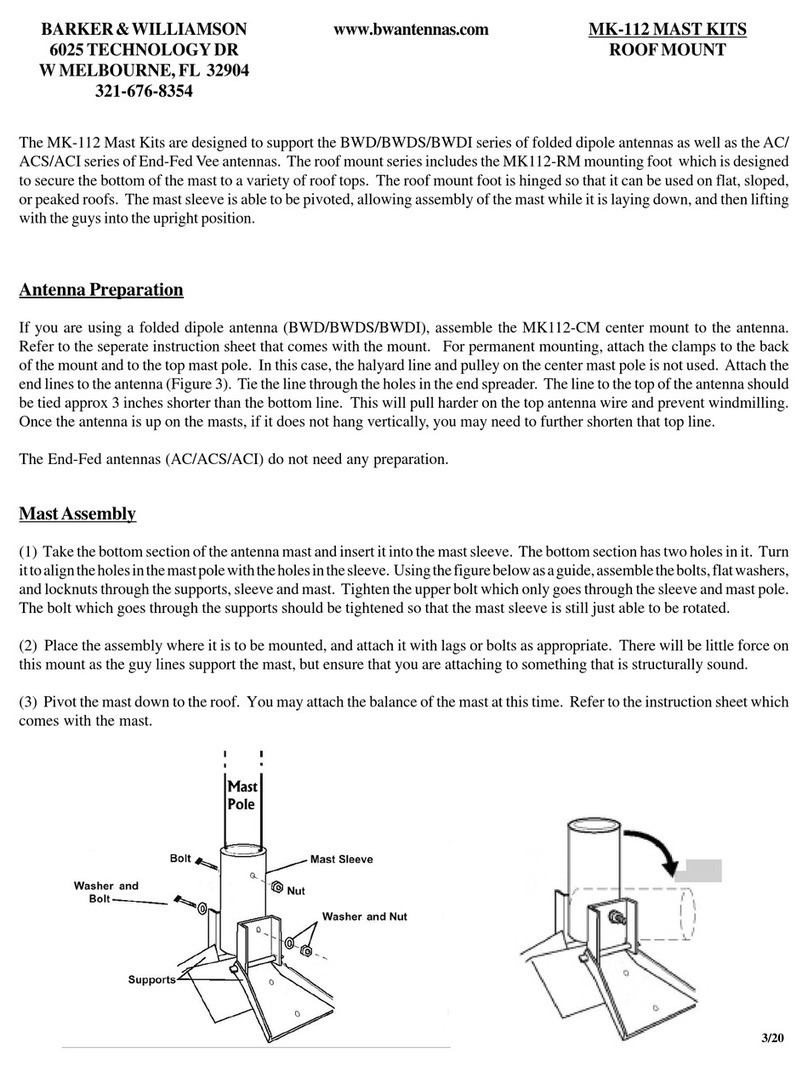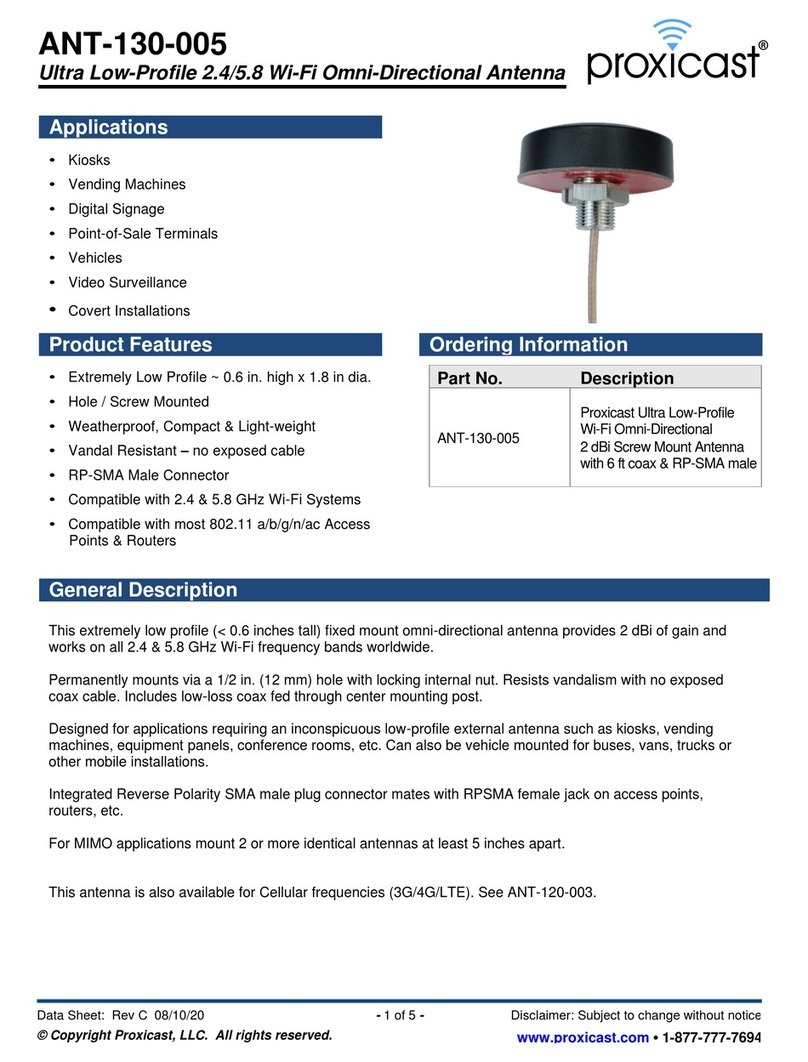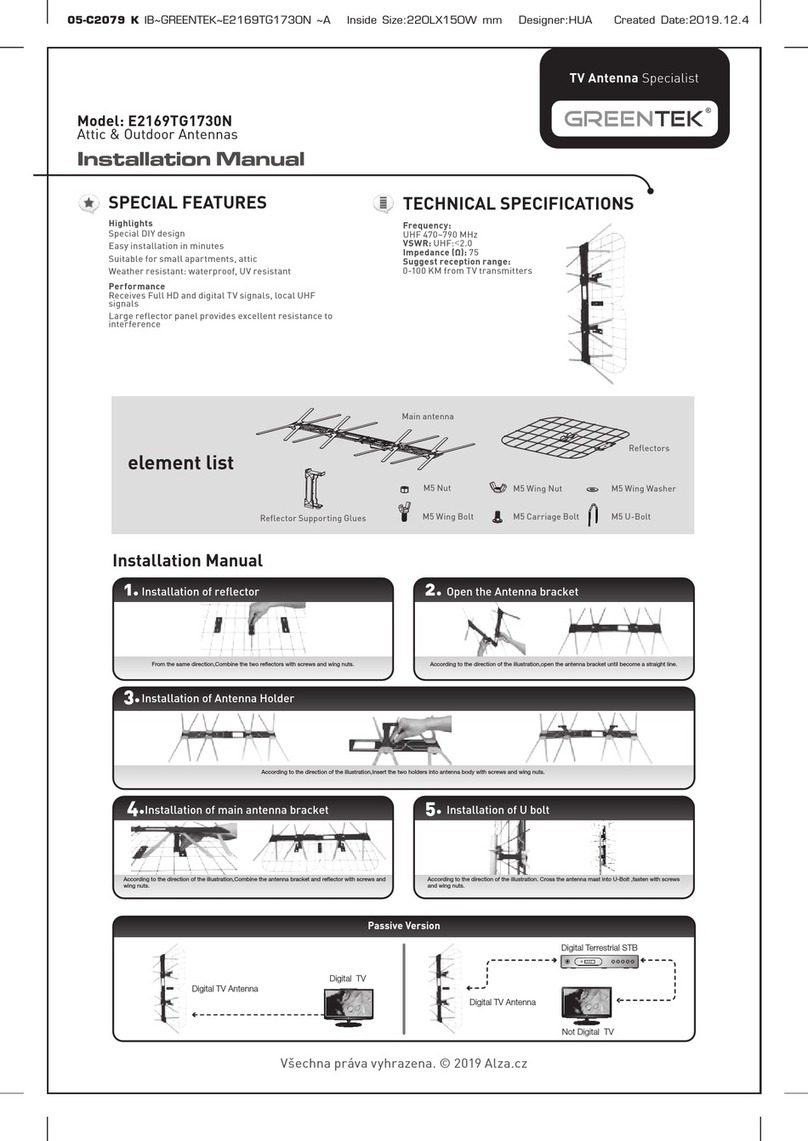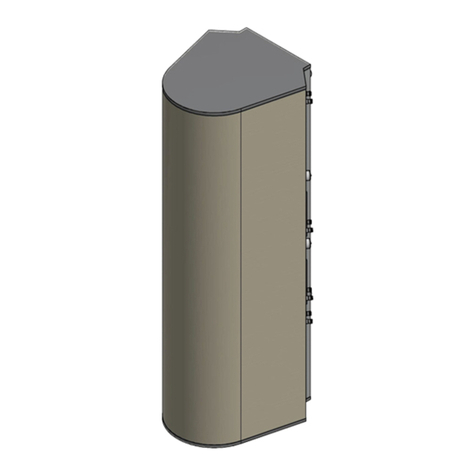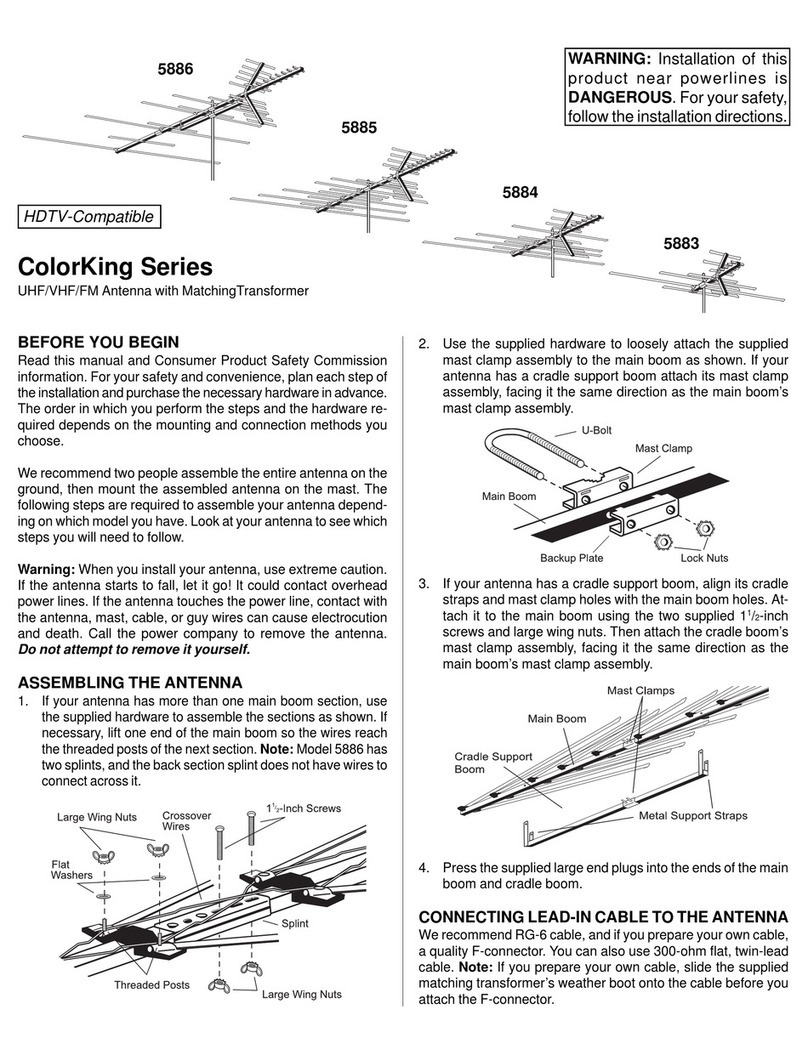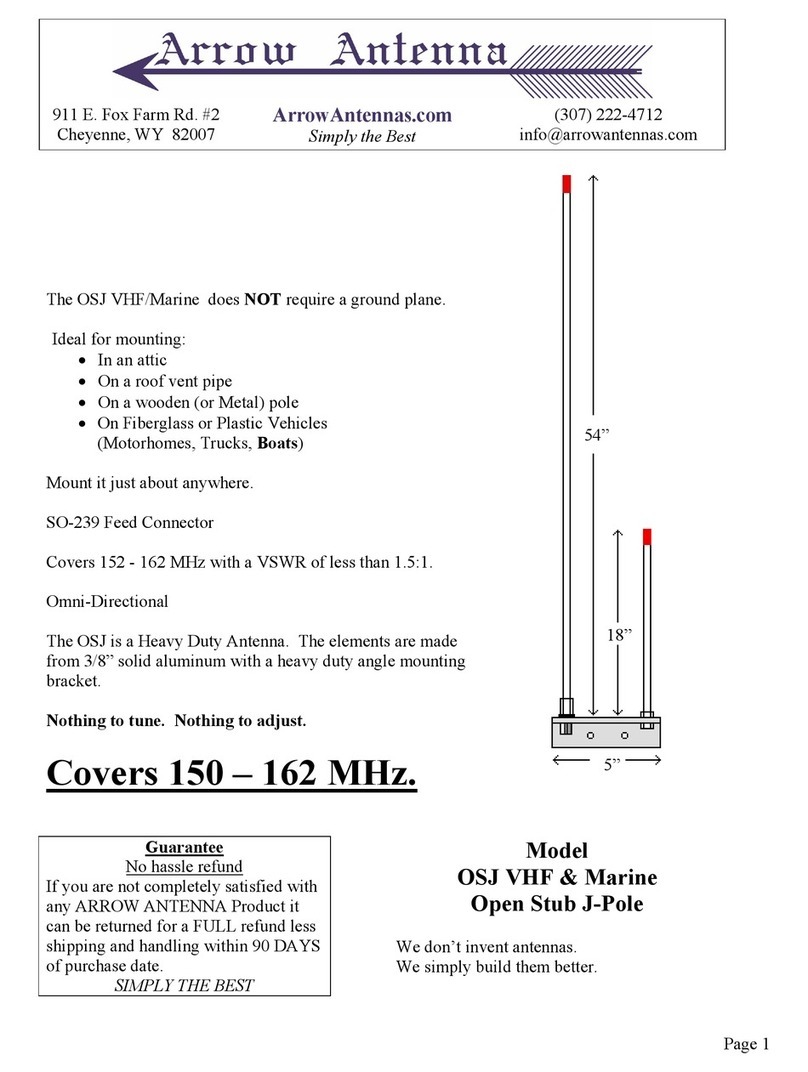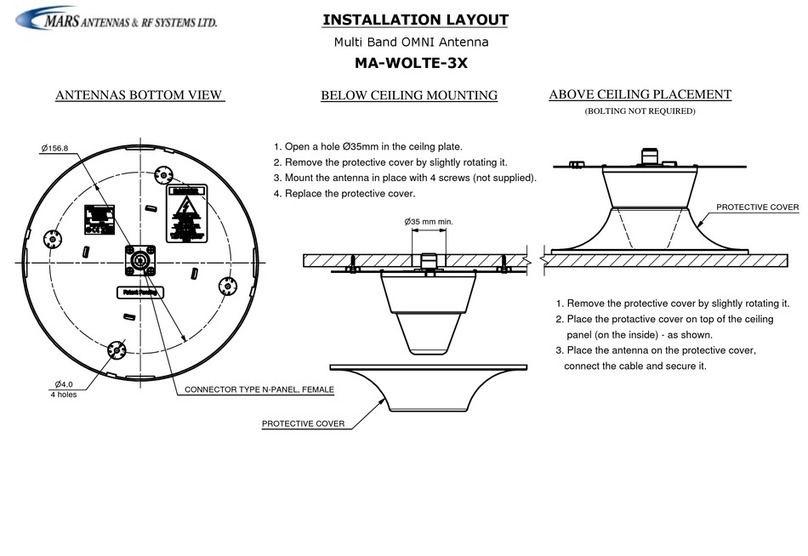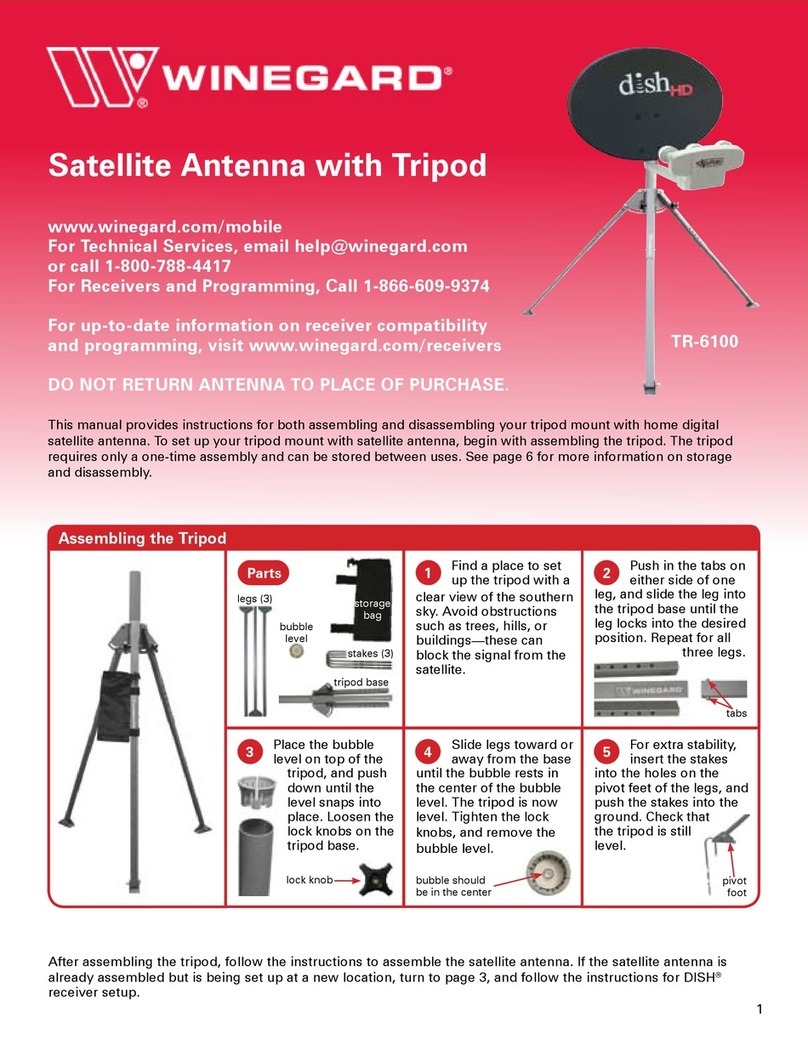BARKER & WILLIAMSON BWDI-20N User manual

(1)
The Barker & Williamson Broadband Folded Dipole Antenna is designed for continuous frequency operation over its specified
range. The antenna comes fully assembled and pretuned so no measuring or cutting is required. It is all weather rated at 1 KW
PEP SSB/CW ICAS (Intermittent Commercial and Amateur Service), and permits use of the full capabilities of today’s
continuous coverage transceivers. Its single feedline operation for all bands provides excellent performance for military, emergency
management, commercial, and amateur installations. Instant tuning with no moving parts allows continuous ALE operation.
Installation will determine the type of propagation, with skywave/groundwave combination, or just skywave for NVIS use. 1KW
PEP Output power CCS (Continuous Commercial Service) requires the HFT-1 balun and LD-9 matching unit.
These antennas are fully camouflaged. Features include a high impact plastic housing for the balun. The matching unit and wire
spreaders are FRP fiberglass. Feedline impedance is 50 ohms, and the antenna is equipped with a female N connector. The wire
is PVC insulated copper with a highly flexible rope lay. For the best mid/long range omni-directional radiation, installation
as a shallow inverted Vee is suggested. For NVIS install as a flat-top low to the ground. These antennas require a three pole
installation, using our MK114-CM center mounting kit, which is included. Also included is a camouflage antenna carry bag with
weather resistant take up spools. We seperately offer fiberglass mast kits for rapid deployment.
WARNING: Do not install where antenna conductors could come in contact with your utility wires. Do not install
over or under utility wires, as wire breakage could cause contact to occur. People and pets must not come in contact
with antenna conductors during transmit operation. Refer to FCC rules on determining a safe zone around the antenna.
Balun and balancing network may become hot during high power operation.
Planning: Determining How and Where to Install
Remember that any radio station is only as good as its antenna. Take the proper time and care to plan it out. A successful installation
requires attention to antenna height, surrounding objects, feedline choice, location and orientation.
(1) NVIS propagation is performed as a flat-top with height varying from ground level to approximately 12 feet. This height is dependent
on the ground (soil) conditions. It may be possible to lay the antenna on the ground in desert/low water table environments. The B&W
NVIS mast kits allow multiple heights. In NVIS installations a counterpoise will sometimes enhance performance. If you are not getting
enough distance from your NVIS setup, try raising the center of the antenna a few feet to make a very shallow inverted Vee. (Appropriate
NVIS daytime frequencies are approx 5-12 Mhz, nighttime are 2-4 Mhz.)
(2) Conventional propagation minimum clear height is recommended at 25 feet for operation down to approx 3.5 Mhz (ends 12 feet for
inverted Vee or sloper), and 40 feet for 1.8 Mhz (ends 20 feet for inverted Vee or sloper). Less height does not disqualify operation, but
may require a tuner on the lowest frequencies. Also, propagation may be reduced with inadequate height on the lower frequencies.
(3) This is a non-grounded antenna, so surrounding "grounded objects" try to absorb your radiated wave on low frequencies. This may
result in poor SWR, and/or poor signal reports. "Grounded objects" include metal towers/poles, roofs, gutters, trees, and the ground itself.
When supporting from metal towers/poles, step off (or up) from the metal with a wood or PVC support arm 3 to 5 feet. Avoid crossing over
roofs when possible. When using trees for supports, try to stay clear of the branches.
(4) When installing in an attic or close to a roof, remember that gutters, power line, and conduit/pipe runs become antennas that may
cause coupling problems at certain frequencies. Attempt to stay perpendicular to such objects. Always keep the balun and balancing
network hanging in the air with proper support such as an FDMK, away from wood and insulation to avoid fire hazard.
(5) Use the proper feedline. Examples are RG-8 (thick), RG-213, 9913. Over 50% of installation problems are coax/connector problems.
Check your feedline (including new ones) with a dummy load placed at the antenna end of the coax. Transmit into the dummy load and
check for 1:1 SWR on all bands. Do not substitute an analyzer for this step. Thin coax such as RG-8X may be used up to 20 watts.
8/12
BARKER & WILLIAMSON
6025 TECHNOLOGY DR
W MELBOURNE, FL 32904
321-676-8354
www.bwantennas.com
BROADBAND FREQ AGILE HF FOLDED DIPOLE ANTENNA
CAMOUFLAGED FOR TACTICAL USE
U.S. PATENT #4423423
ledoM htgneL 1:2<RWS 1:3<RWS sredaerpS lairetaMeriW
N02-IDWBtF02zhM03-41zhM06-03ssalgrebiFreppoCdetalusnI
N54-IDWBtF54zhM03-7zhM06-03ssalgrebiFreppoCdetalusnI
N56-IDWBtF56zhM03-4zhM06-03ssalgrebiFreppoCdetalusnI
N09-IDWBtF09zhM03-8.1zhM06-03ssalgrebiFreppoCdetalusnI
N081-IDWBtF081zhM03-8.1zhM06-03ssalgrebiFreppoCdetalusnI
Specify -S for sand camouflage, and -G for green camouflage.

(2)
(6) The location will usually be determined by trade-offs of height, available supports, and interfering objects. Sometimes, multiple
trials may be necessary to judge which installation is best. Unfortunately, HF is difficult to predict. Usually, adequate height is favored
over other parameters.
(7) Remember that the highest amount of energy is radiated at a right angle to the antenna wire, the minimum off the ends (when the
antenna is parallel to the ground). Consider this when selecting map orientation for your antenna. By using an inverted Vee, you may
change the angle of radiation, and therefor affect the distance of transmission at different frequencies. Put simply, the steeper (more vertical
than horizontal) an inverted Vee is made, the more it will favor DX, and tend to skip over local stations at low frequencies. We recommend
roughly 30 degrees angle down on a leg from horizontal for best general, overall results.
INSTALLATION INSTRUCTIONS
(1) Determine your supports, paying attention to best possible height , antenna configuration, and alignment. Portable masts, trees,
sides of a building, utility poles, etc. make good supports. Do not install parallel to power lines if it can be avoided.
(2) Remove the antenna from the carry bag. Lay it on the ground, the two rolls seperated and the components laying in the middle.
(3) Install the center mounting kit in accordance with the seperate instruction sheet, attaching to the balun and terminator.
(4) Uncoil one half of the antenna. Avoid twisting or kinking by keeping a little tension during unrolling. Let the takeup spool rotate
in your hands - do not pull the wire off the ends as it will kink. Attach the end rope with ring as shown in Figure # 1. If you keep the
top arm of the rope 1" - 3" shorter than the bottom arm , the antenna will hang in a proper vertical position instead of rotating flat.
(5) Attach your end mast lanyard line to the ring and pull just enough tension to keep the antenna half straight on the ground.
(6) Repeat steps # 4 and # 5 to the other side of the antenna.
(7) Attach your coax cable, attach the center lanyard, and raise the center of the antenna up in the air. Again avoid twisting or kinking.
Now tension the end lanyards.
(8) Run the coax to the station. Run the coax down to the ground, and then perpendicular to the antenna for as far as possible. If this
is not done properly, you will transmit onto the shield of the coax, causing high SWR and transmitter power cutback. Only use a sufficient
length of coax to reach the station
(9) Your antenna is ready for operation. It is broadband and pretuned at the factory for an average SWR of 1.4:1 to 2.0:1 in HF depending
upon the frequency used and surrounding objects, ground conditions, etc. You may find that in extremely bad locations the use of an
antenna tuner will be helpful. SWR of 2:1 to 3:1 should be expected on 6 meters without a tuner.

(3)
WARRANTY STATEMENT
Barker & Williamson guarantees each product to be free from defects in material and workmanship for 90 days from date of purchase.
The warranty applies to the original purchaser only, and we will repair or replace the product at our discretion. Under no circumstances
will Barker & Williamson be liable for any damages or consequential damages arising from use or misuse of our products. Warranty
is voided if product is subject to misuse, neglect, accident, improperly installed or used in violation of the instructions furnished
by us. We reserve the right to make changes in design at any time without obligation to update previously manufactured models.
This warranty is given in lieu of any other warranty, expressed or implied.
(3)
CENTER SUPPORTED
BY MK114-CM
This manual suits for next models
4
Table of contents
Other BARKER & WILLIAMSON Antenna manuals
Popular Antenna manuals by other brands
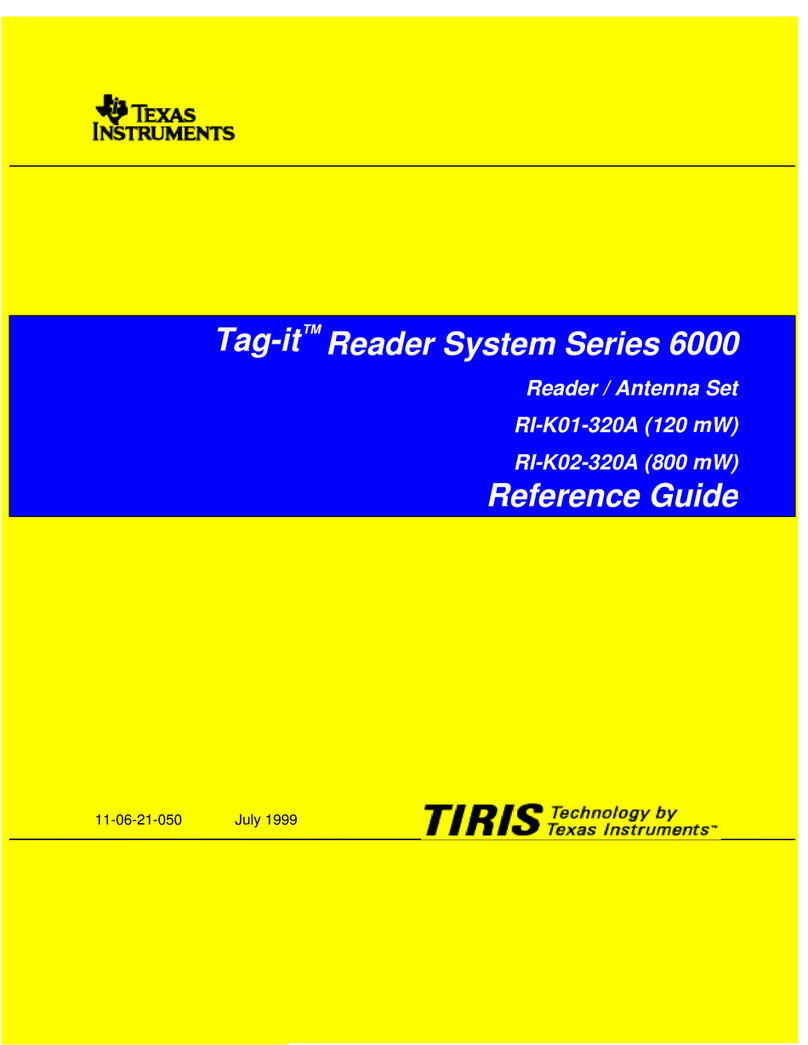
Texas Instruments
Texas Instruments Tag-it RI-K01-320A reference guide
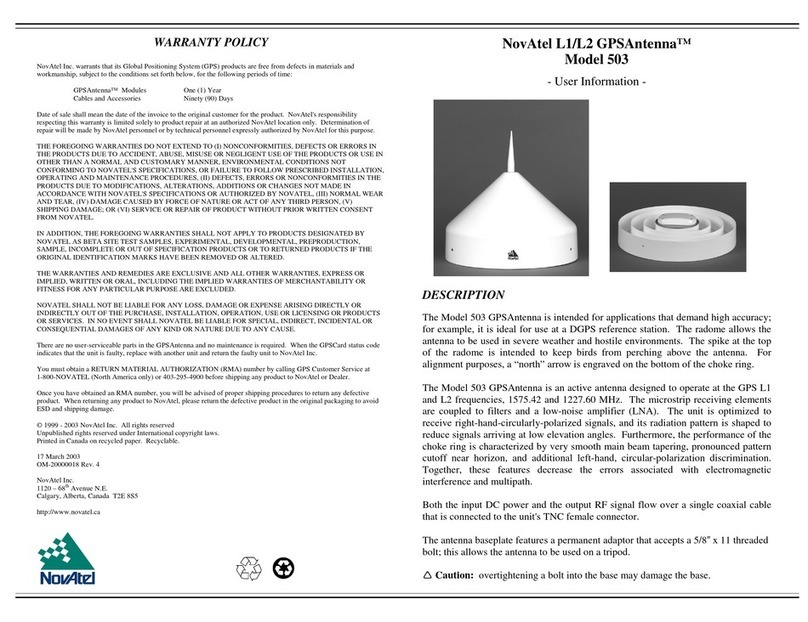
Novatel
Novatel L1/L2 GPSAntenna 503 User information
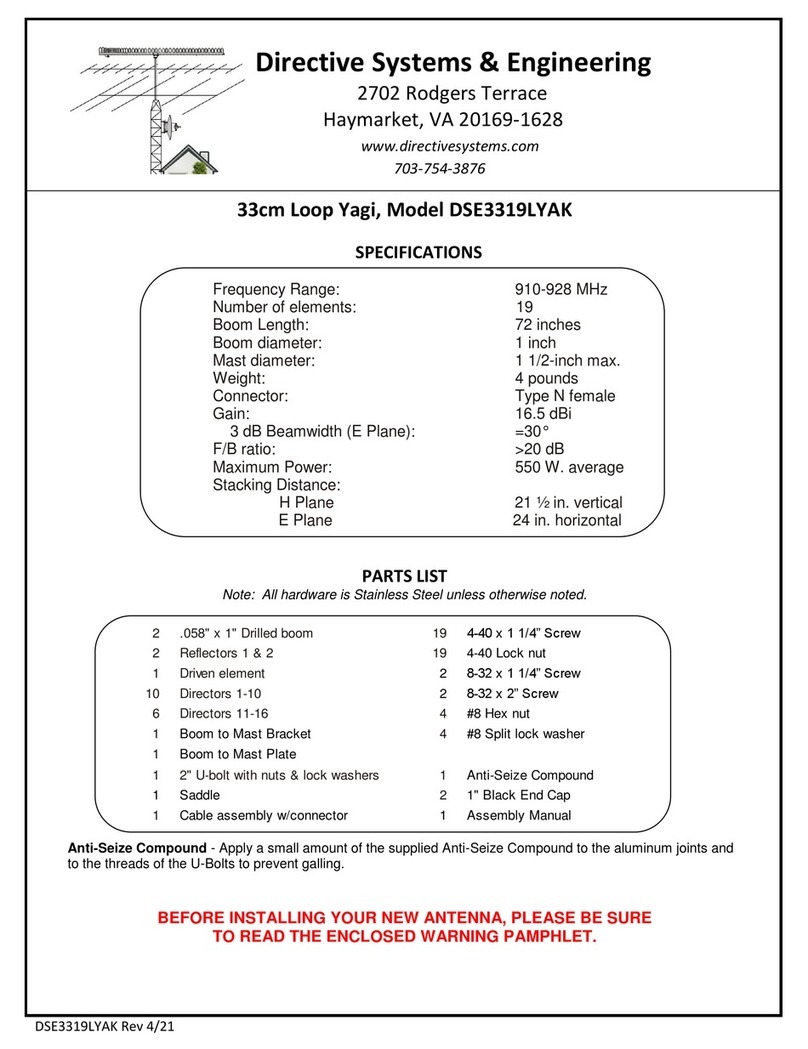
Directive Systems & Engineering
Directive Systems & Engineering DSE3319LYAK quick start guide
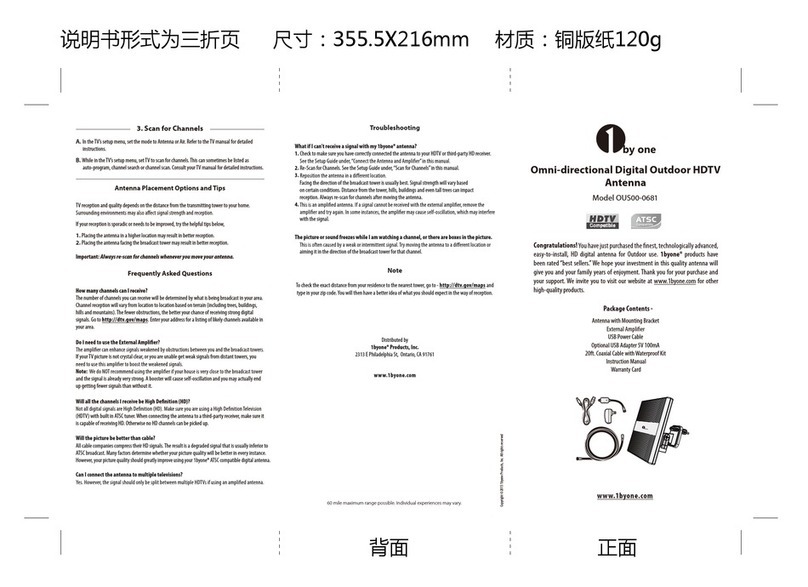
1 BY ONE
1 BY ONE OUS00-0681 instruction manual

Altelix
Altelix PRO Series Assembly instructions
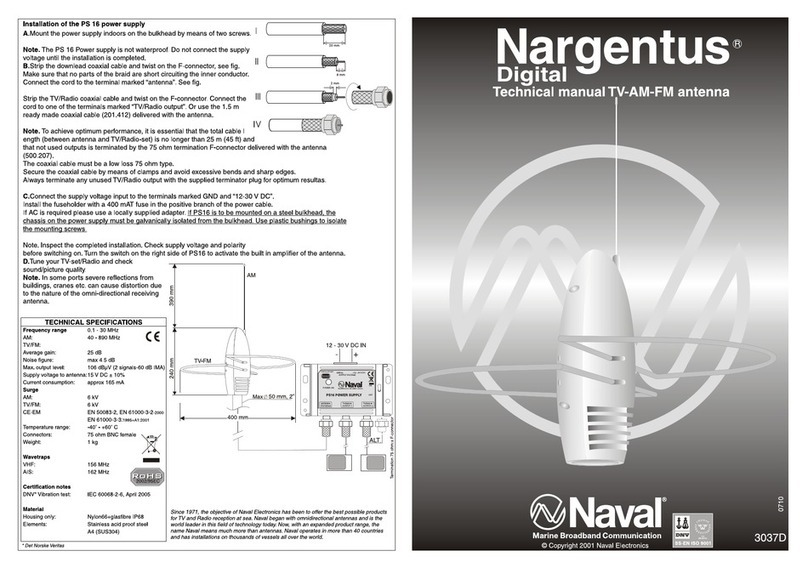
Naval
Naval PS16 Technical manual
